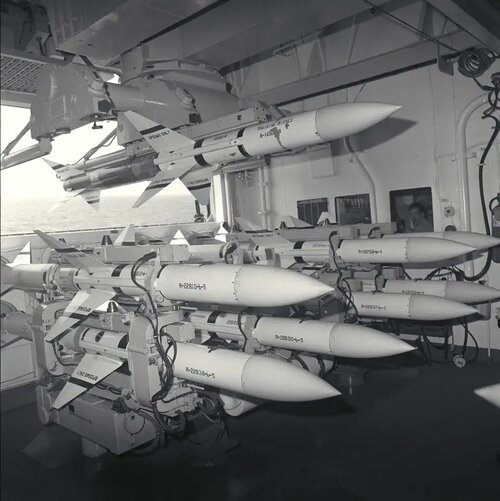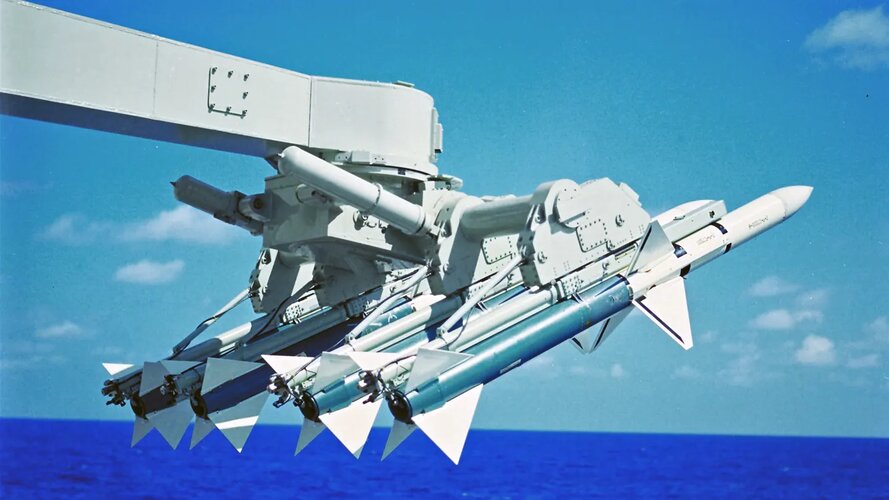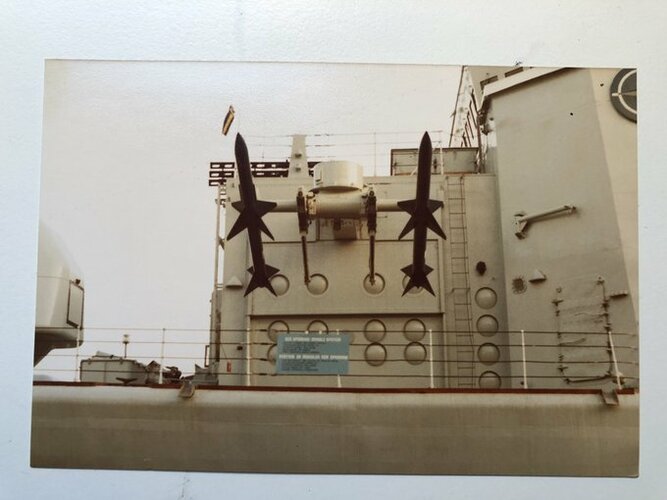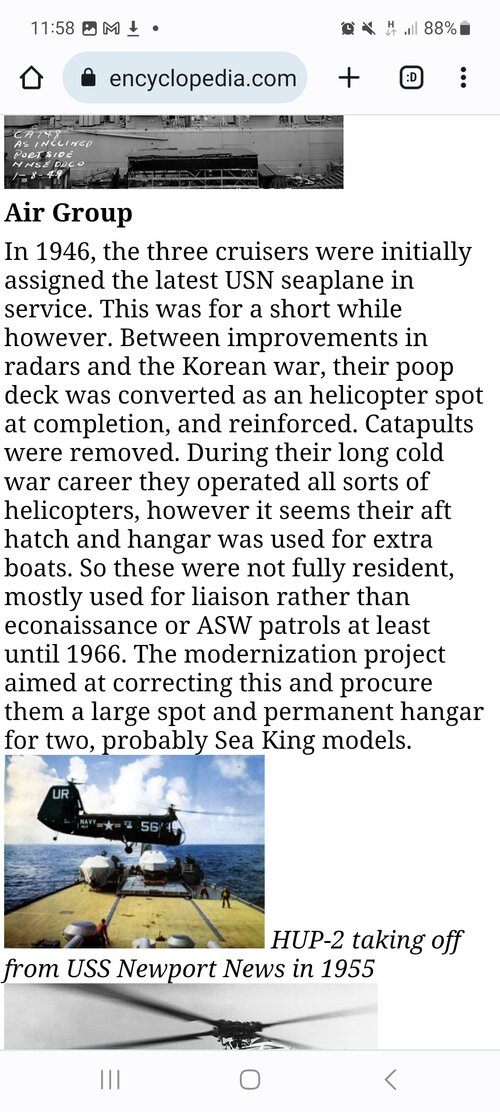- Joined
- 16 April 2008
- Messages
- 9,604
- Reaction score
- 14,490
Sea Chaparral was basically a non-starter, as the IR Sidewinders available at the time were tail chase only. Maybe if they used the AIM-9C SARH versions, but then that would require an illuminating radar same as Sea Sparrow...
Wait.
Did the AIM-9C use the same radar frequencies as the Sparrow? Because if they don't that means you could have a Sea Chaparral and Sea Sparrow covering each arc and not conflicting with each other. Which would be a worthwhile improvement over being stuck with a single launcher per side and only able to engage a single target per side. Trick would be setting up the systems so that the Sea Sparrow would engage the longer targets and the Sea Chaparral the ones that got past the Sea Sparrow. Radar range gating, maybe?
I'm fairly certain this can't work. The CW illuminator beam isn't a floodlight, it's fairly narrow and has to be held on a specific target (in BPDMS, this was done manually, IBPDMS/NSSM added automatic tracking). It was only with active phased array radars (APAR, etc.) and autopilot-equipped missiles like ESSM that they could use something called Interrupted Continuous Wave illumination to guide multiple missiles in flight at one time.
Some Sea Sparrow installations (mainly carriers, I think) do have two guidance radars for each launcher.






